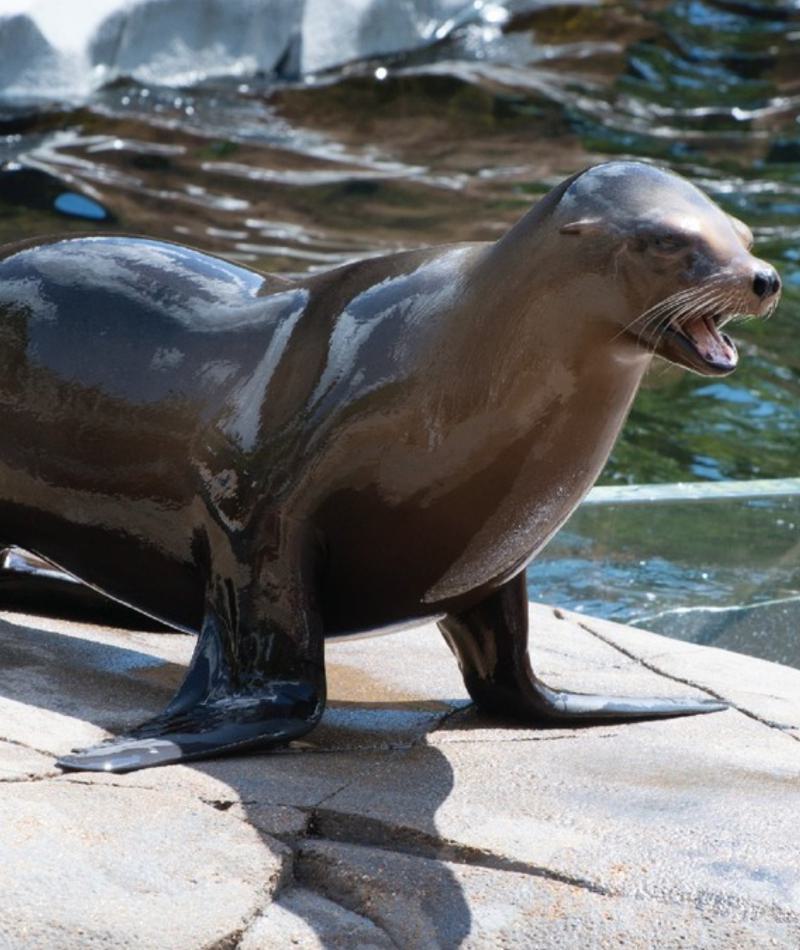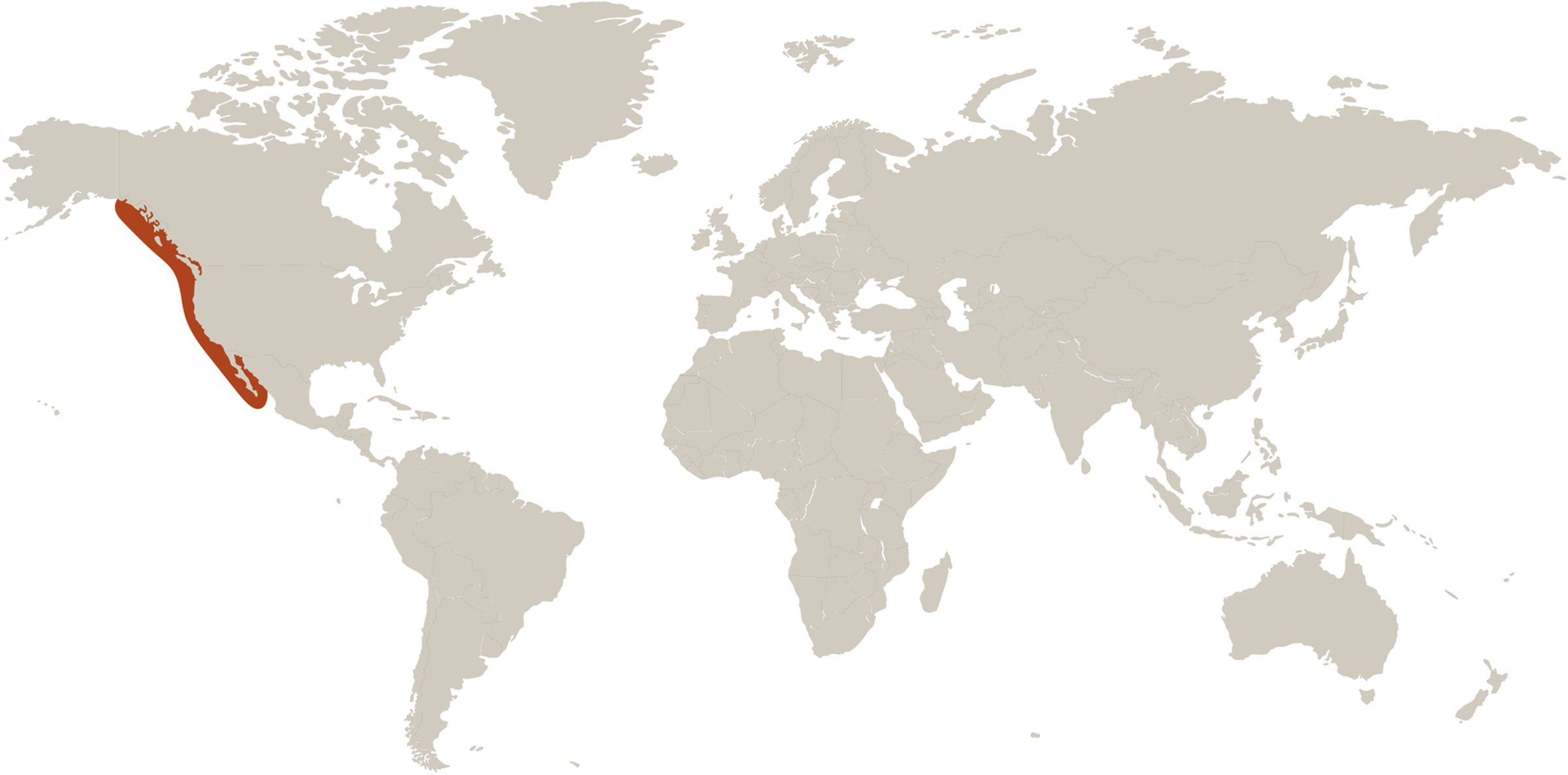
California Sea Lion
Zalophus californianus californianus
Did you know?
- California sea lions are a part of the Otaridae family, which they share with other eared seal species (sea lions and fur seals)
- Sea lions, seals and walruses are marine mammals belonging to an order called pinnipeds, which means “fin-footed” or “wing-footed.
- They live in ocean waters and coastlines along the Pacific Coast of North America.
- They can eat over 30 pounds (about 13.5 kilograms) of food per day.
- A female will give birth to one young at a time.
Adaptations
Sea lions have many adaptations that help them thrive in the water. They have a thick layer of fat, called blubber, which helps with buoyancy and swimming, serves as an energy reserve, and helps to regulate their body temperature. Their torpedo-shaped body makes them streamlined, helping them dive to depths of up to 1,000 feet (three football fields). They can close their inner ears and nostrils, keeping water out! Even their tears protect them, continuously washing over their eyes as they swim.
Sea lions have the same bone structure in their fore flippers as humans have in their hands, though theirs are modified for swimming. They also have five “fingers” in their hind flippers – they even have three toenails. They can rotate their hind flippers under their body, allowing them to stand on all four limbs. Using both their fore flippers and hind flippers, they are able to walk on land. Unlike humans, they don’t see in color. Instead, they see in black and white but can pick up tones of green and blue. This helps them detect movement in their aquatic environment.
Young and Family
The playful, curious California sea lions are very social animals. They live in groups, or “harems,” that include a bull and 10 to 15 cows. During their summer-long breeding season, they gather in the thousands on isolated coastlines and islands. Males patrol territories and bark almost continuously during the breeding season. This species takes part in synchronized reproduction, which is why 90% of California sea lions are born in June.
Young can swim at birth and walk within an hour after birth. Mothers recognize pups on crowded rookeries through smell and vocalizations. A sea lion pup can pick its mother out from hundreds of sea lions just by the sound she makes.
Threat Level
- Unknown
- Common
- Near Threatened
- Threatened
- Endangered
- Critically Endangered
- Extinct in the Wild
Common
The California Sea Lion is widespread and abundant.
Range
Pacific Coast of North America
Habitat
Ocean waters, sandy or rocky coastlines

We care about California sea lions
All marine mammals are protected by the federally regulated Marine Mammal Protection Act. Though California sea lions are listed as “common” and not currently endangered in the wild, other marine species are. Ocean animals are often accidentally caught during commercial fishing for other fish. It is important that consumers purchase seafood from suppliers that farm or fish in ways that will ensure the long-term health of the world’s oceans, rivers and lakes.
The
Saint Louis Zoo participates in the Association of Zoos and Aquariums'
Species Survival Program for California sea lions. We support a family
of sea lions in Sea Lion Sound at the Zoo. Learn more about our
conservation efforts.
Find this animal in Lakeside Crossing

SAINT LOUIS ZOO ZONE
Lakeside Crossing
Located in the center of the Zoo, Lakeside Crossing has a variety of food services, shopping destinations and a grassy plaza to rest and relax.

